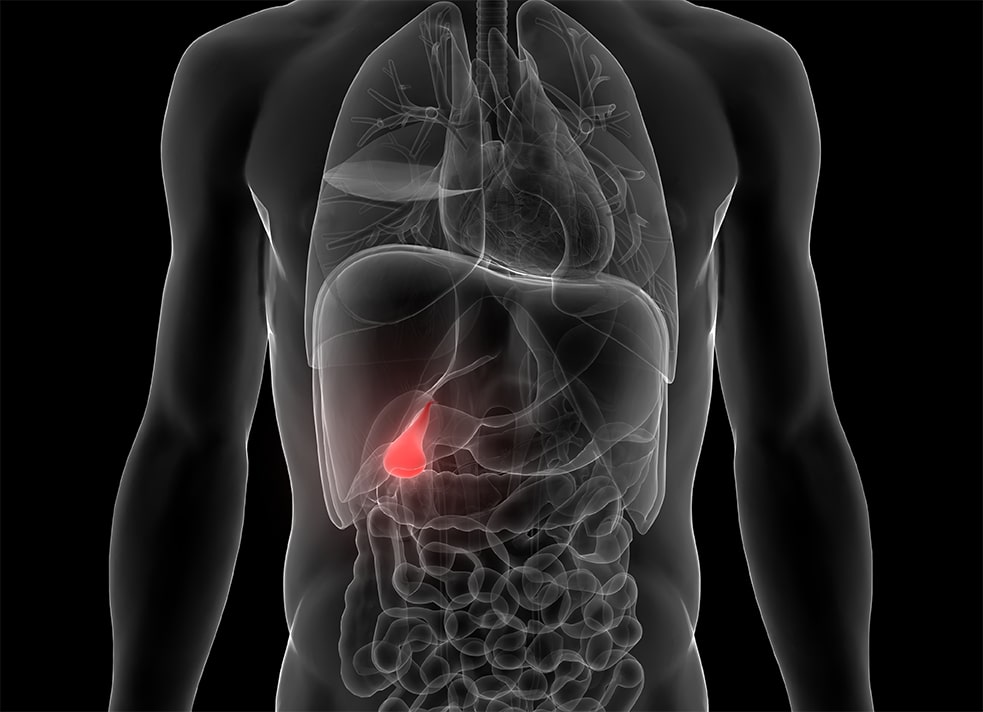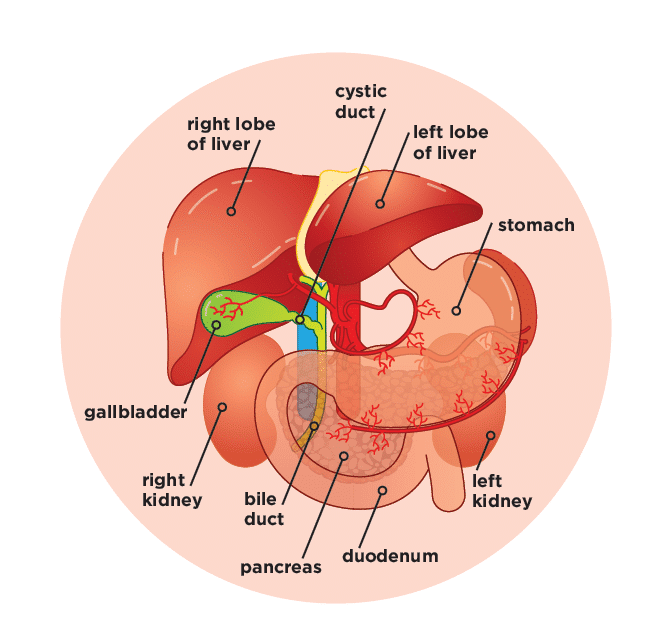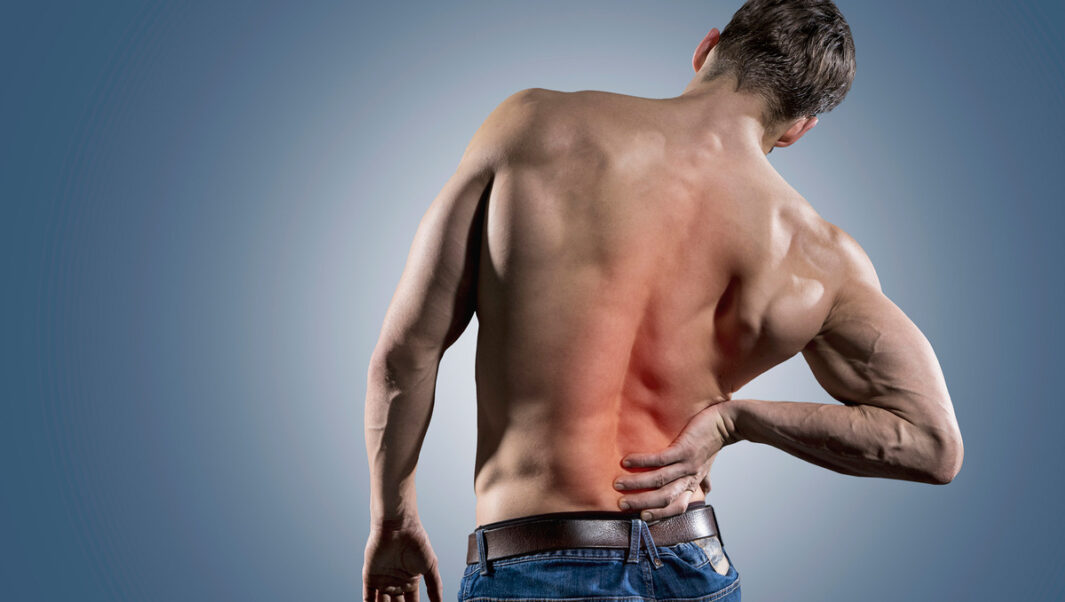Get to Know the Gallbladder
This storage pouch sitting beneath the liver serves a helpful, though not essential, purpose in digestion.

When you think of the gallbladder, two things likely come to mind: It’s located in the right abdomen, and it’s associated with painful gallstones. But, typically, little attention goes to this small organ working quietly behind the scenes during digestion.
Part of the biliary system, the gallbladder stores concentrated bile released from the liver and later secretes the fluid into the duodenum—the first part of the small intestine—to break down fat (Jones & Deppen 2018).

Here are some more facts about the gallbladder:
- When the stomach distends with fatty food content, the duodenum releases cholecystokinin. This hormone triggers the gallbladder to contract and transport bile to the small intestine (Jones & Bhimji 2018; Jones & Deppen 2018).
- The gallbladder measures 7–10 centimeters in length and 4 cm in width and is shaped like a pear. It stores 30–50 milliliters of bile (2–3 tablespoons) (Jones & Bhimji 2018; Jones & Deppen 2018).
- The cystic duct connects the gallbladder to the bile duct, which transports bile toward the duodenum. When gallstones or other factors obstruct the cystic duct, or if nerve stimulation is disrupted (during gastric surgery, for example), cholecystitis—inflammation of the gallbladder—can develop. As a result, the gallbladder may enlarge up to twice its size, which can cause infection and require its removal (Jones & Bhimji 2018).
- Though the gallbladder optimizes fat digestion, it is not indispensable. Even without the gallbladder’s on-call reserve of bile, the liver produces enough of it to digest fat as needed. When the gallbladder is removed, the bile duct transports the fluid directly from the liver to the duodenum (Harvard Health Publishing 2011; Canadian Cancer Society n.d.).
- Two types of gallstones can develop in the gallbladder: cholesterol stones and pigment stones. Cholesterol stones are yellow-green and are composed of hardened cholesterol. Pigment stones are dark and are made up of bilirubin, the substance produced when the liver breaks down old red blood cells (NIDDK 2017; UMHS 2018).
- Gallstones affect roughly 10%–15% of the U.S. population, and 65%–75% of those affected are women. Higher estrogen levels make women more likely to develop gallstones (NIDDK 2017; Harvard Health Publishing 2011).
References
Canadian Cancer Society. n.d. The bile ducts. Accessed Jan. 14, 2019: cancer.ca/en/cancer-information/cancer-type/bile-duct/bile-duct-cancer/the-bile-ducts/.
Harvard Health Publishing. 2011. What to do about gallstones. Accessed Dec. 13, 2018: health.harvard.edu/womens-health/what-to-do-about-gallstones.
Jones, M.W., & Bhimji, S.S. 2018. Anatomy, abdomen and pelvis, gallbladder. Accessed Dec. 13, 2018: ncbi.nlm.nih.gov/books/NBK459288/.
Jones, M.W., & Deppen, J.G. 2018. Physiology, gallbladder. Accessed Dec. 13, 2018: ncbi.nlm.nih.gov/books/NBK482488/.
NIDDK (National Institute of Diabetes and Digestive and Kidney Diseases). 2017. Definition & facts for gallstones. Accessed Dec. 13, 2018: niddk.nih.gov/health-information/digestive-diseases/gallstones/definition-facts.
UMHS (University of Michigan Health System). 2018. Bilirubin. Accessed Dec. 18, 2018: uofmhealth.org/health-library/hw3474.
Sarah Kolvas
Sarah Kolvas is the content manager for IDEA.






